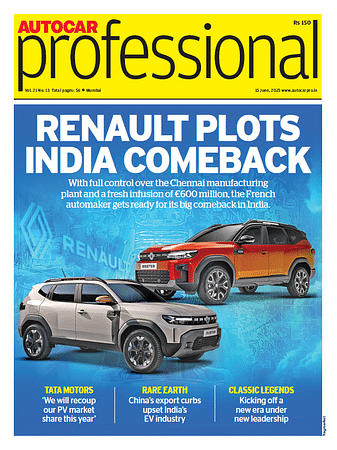'EV industry should work together to lower insurance costs': Sachin Shilavat, Reliance General Insurance
Among the reasons for higher insurance costs include the specific components in the vehicle, such as electric motors, batteries and transmission modes, which are at present expensive.
Auto industry stakeholders should work together to bring down the electric vehicle insurance cost for the insurance companies. That's the word coming in from Sachin Shilavat, President and Head - OEM and Automotive Alliances at Reliance General Insurance.
Speaking at the India EV conclave organised by Autocar Professional and the government of Tamil Nadu, Shilavat said that costs can be reduced via data sharing among all stakeholders.
According to industry stakeholders, even though electric vehicles possess fewer moving parts as compared to their ICE counterparts, the insurance for EVs is relatively higher.
Industry estimates suggest that the average insurance cost remains 1.5 times higher for EV cars than for ICE ones. It becomes much higher for two-wheelers, where the average cost may go up by around three times.
"While the entire EV landscape is evolving, the cost of insurance should come down," Shilavat noted while analysing the challenges faced by insurance
companies in relation to EVs.
Among the reasons for higher insurance costs include the specific components in the vehicle, such as electric motors, batteries, and transmission modes, which are expensive at the moment. Localisation and innovation are two ways in which the costs can be lowered, especially when it comes to batteries, which form about 40% of the overall cost of the vehicle. Further, though the maintenance cycle for EVs is on the lower side, it requires a specialised skilled workforce, which also ends up pushing the costs.
He further highlighted that non availability of child parts for high value parts like battery and motor assembly was among the key issues for high claims costs. besides non-repairability of high-value parts.
While the challenges remain, he pointed out that the insurance companies are looking to mitigate them to some extent by offering personalised offers, including riders to the EV customers.
However, the situation is likely to change in coming years, as a higher number of EVs on the road means greater competition among OEMs and their suppliers to bring down the vehicle and component costs. Also, it is likely to lead to more data sharing among different stakeholders, which could turn out to be a win-win
situation for both the insurance companies as well as the end consumer.
RELATED ARTICLES
Vida VX2 Go Compared: How It Stacks Up on Price, Range & Charging Time
The entry-level VX2 Go is a direct rival to the Bajaj Chetak 3001 and the TVS iQube 2.2.
Qualcomm to Host 'Snapdragon Auto Day' on July 30 in New Delhi
The event, held in collaboration with AWS, will bring together industry leaders to explore connected vehicle technologie...
TVS Motor Company Launches New 3.1 kWh Variant of TVS iQube at ₹1.03 Lakh
The new model strengthens TVS Motor’s electric vehicle (EV) portfolio, which now comprises six variants.





 22 Nov 2023
22 Nov 2023
 12823 Views
12823 Views





 Autocar India
Autocar India


 Sarthak Mahajan
Sarthak Mahajan

 Arunima Pal
Arunima Pal

